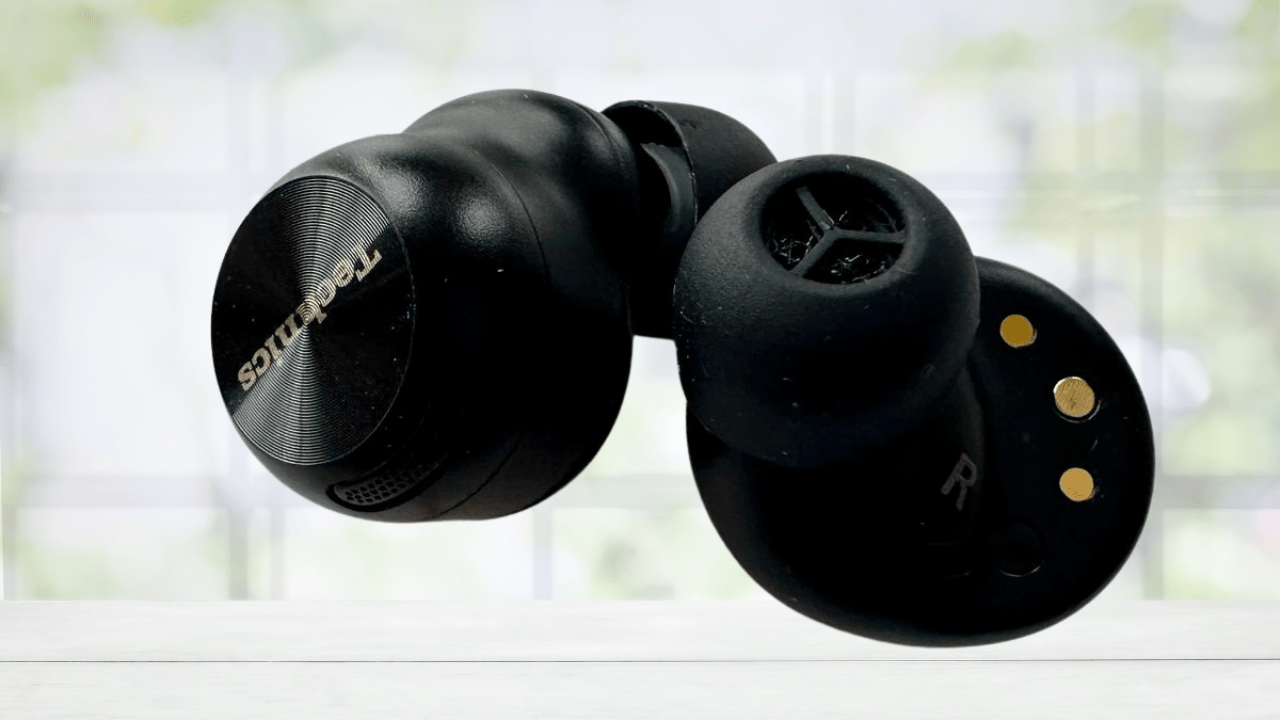AI Earphones 2025: The Game-Changing Revolution in Personal Audio & Smart Translation”
Overview of AI Earphones
With the help of AI technologies, the power of AI earphones is set to transform mobile audio systems by providing them with personal features such as sound monitoring, customized audio landscapes, and voice translation of multiple languages. This gadget is more than just a modern headset; they serve as smart aides catering to the personal preferences of each user. AI earphones are an innovation for the audio technologies as projected growth in global true wireless stereo (TWS) earbuds marketplace stands at $243.9 billion by 2028. At the same time, those innovations raise new ethical issues such as privacy and discrimination, which should also be taken into account. The article focuses on the features of AI earphones, discusses industry transformations, analyzes benefits, risks, and prospects.
Important Takeaways
- AI earphones boost features like sound translation and translation of biometric indicators.
- Compared to today, the market for TWS earbuds is forecasted to nearly double by 2028.
- Significant ethical concerns AI algorithms regarding privacy and bias.
- Further development might include the integration of AR technologies as well as eco-friendliness.

Understanding AI Earphones
What Are AI Earphones?
AI earphones are a type of wireless earbuds or headphones that utilize advanced technologies of artificial intelligence to offer additional functionalities aside from audio playback. They have capabilities for real-time translation of multiple languages, sound modification based on the environment or personal/user preferences, fitness coaching, as well as tracking of multiple health parameters. AI Earphones are important because they improve accessibility, personalization, and communication and transform audio experiences.
Why They Matter In 2025
With the rise of new technological innovations, the emerging AI audio market is bound to grow rapidly, reaching $280.7 billion by 2032. This signifies a need for new innovative audio solutions. In the modern world where globalization is key, AI earphones also cater to global connectivity making them useful for travelers, professionals, and tech enthusiasts. However, since they are powered with a lot of data, their use raises privacy and fairness concerns making their ethical development immensely important.
Applications and Impact
Real-World Applications
The versatility of AI earphones is displayed in various products:
- Iyo One AI Earbuds offer state-of-the-art features like advanced translation, spatial audio, and health tracking for $599–$699.
- Wellyp Audio AI Translating Earbuds offers real-time translation with noise cancellation for more than 40 languages.
- Pixel Buds Pro 2 by Google are integrated with Gemini AI for hands-free control.
Benefits and Risks
AI earphones serve benefits such as providing freedom of movement, personalized tuning of audio experiences, improved efficiency, and seamless communication. On the other hand, risks pose data privacy breaches and biased phrases from complex algorithms serving translations. Striking a balance between innovation and moral boundaries should be the focus toward their sustainable adoption.
The Future of AI-Integrated Earphones
AI-Integrated Earphones: Transforming Individualized Audio in 2025
AI-integrated earphones emerged best in optimizing personal audio in 2025 as they seamlessly incorporated the wearable technology and features of artificial intelligence gadgets. In addition to audio playback, today’s devices offer a wide array of functions such as language translating in real time, custom soundscape creation, audio health diagnostics, monitoring functions, and much more! Considering the growing consumption of modernized audio technology and the rising demand of TWS earbuds, which is expected to grow to $243.9 billion by 2028, AI earphones ensure a preserved position as an evolving tech in the industry. This paper aims to capture all aspects of interest concerning new age AI Earphones encompassing their merits, potential societal risks, ethical dilemmas, foresight, and current use cases under a single umbrella for industry watchers and tech enthusiasts.
Explaining Reinvented AI-Integrated Earphones and Their Significance
As an example, AI Earphones can be classified as smart earbuds or headphone sets that also make use of artificial intelligence technologies with the aim to facilitate and amplify audio experience. Unlike simpler pairs of earphones, modern AI Earphones and smart headsets are capable of performing sophisticated functions like explaining the workout coming next, real-time translation of foreign languages, automatic sound level corrections, health and biometric data tracking, and much more. The promise that the AI earphones bring would be to erase language barriers, create and promote forever changing, easy-to-access audios, enable AI personalized voice changing speech, and greatly customized audio signatures for individuals.
According to the AI Audio Market, the worldwide AI audio industry is anticipated to garner $280.7 billion by 2032, indicating substantial investment and consumer engagement. Not limited to a fad, AI earphones have the potential to transform the traveling and professional landscape, as well as aid users with accessibility challenges. Regardless, the data processing needed for AI functions raises ethical concerns regarding information bias, responsibility, and privacy, which must be settled for the sake of trustworthy advancement.

Business and Consumer Applications
The Uses of AI Technology Earphones the Business World Embraces
Fulfilling the energetic interests of users who prefer a hands-free approach to their phones, AI-powered earbuds use voice commands and translate spoken audio to text to assist in managing calls and provide easier, faster workout coaching. For modern spatial audio lovers who like to structure sound according to their audience, each earbud offers distinct features that highlight its versatility; therefore, these companies will be first to unlock this technology. Let’s unlock the unique features of the products alongside their prices in the following table:
| Product | Key Features | Price | Languages Supported |
|---|---|---|---|
| Iyo One AI Earbuds | Workout coaching, biometric analytics, real-time translation, spatial audio | $599–$699 | Not specified |
| Wellyp Audio AI Translating Earbuds | High-grade noise canceling, translator, open-ear design | Not specified | Over 40 |
| Google Pixel Buds Pro 2 | Gemini AI Assistant, adaptive sound, multi-device pairing | Not specified | Not specified |
| Timekettle WT2 Edge | Hands-free translation, high accuracy, lightweight design | Not specified | Over 40 |
| Apple AirPods Pro | Noise cancellation, spatial audio, compatible with translation apps | Not specified | Not specified |
Iyo One AI Earbuds
By 2025, these new earbuds will be launched, featuring real-time translation, spatial audio, head tracking, and AI voice adaptive boosting. Priced at $599 for Wi-Fi and $699 for cellular models, they cater to premium users (TechRadar).
Wellyp Audio AI Translating Earbuds
Real-time translation is available in over 40 languages. Users receive audio guides in an ergonomic open-ear style. The earbuds feature advanced noise-canceling technology and audio of unmatched quality. These earbuds are perfect for travelers and entrepreneurs (Wellyp Audio).
Google Pixel Buds Pro 2
The earbuds come equipped with “hands-free, eyes-free” Gemini AI Google Assistant. Users with Android phones can now control their devices without the need to touch them. This technological perk saves time and improves convenience for users to an even greater level (CNET).
Timekettle WT2 Edge
These earbuds come equipped with over 40 languages and accents and offer high-level translation accuracy and hands-free service, making them a perfect fit for multilingual hubs (Wellyp Audio).
Apple AirPods Pro
Primarily recognized as a high-sound quality and noise cancellation device, they can also be paired with apps such as iTranslate or Google Translate, which offer real-time voice assistance. This greatly increases their functionality (Wellyp Audio).
The application of communicator AI earphones showcased advancements in improving interactions, accessibility, and customization aimed for tailored user experiences.
Advantages of AI Earphones
Key Benefits
The audio sector is being transformed positively due to the advantages brought forth by integrating AI into earphones:
- Real-time Translation: Encourages multilingual interaction for people all over the world, breaking the language barrier. This innovation serves to assist travelers as well as business people operating in multilingual environments.
- Tailored Listening Experience: AI can optimize sound profiles for specific users based on their preferences, hearing ability, and environmental factors, enhancing audio quality while offering a personalized experience.
- Wellness and Fitness Monitoring: Iyo One is an example of AI earphones that features biometric sensors for monitoring heart rate, activity, and stress, providing valuable insights into health, especially in the context of growing health-tech wearables.
- Improved Inclusivity: Hearing-impaired individuals can benefit from sound and voice amplification features, broadening the scope of audio to a wider range of people.
- Convenience and Efficiency: Voice assistants and other smart functionalities empower users to manage tasks, obtain information, and control different devices hands-free, which eases the burden of daily chores while enhancing productivity.
With these functionalities, AI earphones offer an unprecedented revolution in personal audio, enabling features previously thought to be impossible.
Ethical and Practical Considerations
Ethical Risks and Concerns
Consideration of AI earphones comes with ethical challenges and risks that require attention:
- Privacy Concerns: The need to gather data for personalization and other diverse functions raises concerns related to privacy, security, and potential abuse. For example, earphones that capture chats may record sensitive details inadvertently, thereby technology-enabled negligence would violate privacy (OECD.AI).
- AI Algorithm Bias: The translation and personalization features may amplify biases found within the training datasets. For example, translations to and from certain languages or dialects may be done with less accuracy, which poses disadvantages towards specific user groups (World Economic Forum).
- Overdependence on Technology: Relying on AI for communicating professionally or socially diminishes the motivation to learn new cultural languages and appreciate the diversity, leading to an erosion of linguistic diversity (Fast Company).
- Health Concerns: The long-term use of ultra-modern earphones that incorporate biometric sensors may lead to unknown health concerns such as electromagnetic radiation and discomfort from prolonged use (Capitol Technology University).
- Job Loss: While not directly associated with the earphones, the increasing reliance on AI technology may result in a shrink in the customer service and translation industries, which raises economic concerns surrounding workforce displacement (Kambria).
- Sustainability: The increasing concern of environmental degradation due to the energy consumption of AI processing calls for sustainable practices concerning the use of e-waste from electronic devices (Britannica Money).
These issues require joint action from manufacturers, regulators, and consumers to ensure that AI earphones will be used and developed in a responsible manner.
Future Prospects
Looking Ahead
The horizon is clear for AI earphones, especially with persisting advancements in the field of AI, device miniaturization, and integration with other smart devices. Here are some key takeaways to look forward to:
- Advanced Intelligence and Machine Learning Features: More communication assists with accomplishing more interactions. This develops inclusion for every person in the world.
- Improved Usability with Customized Settings: The AI system will undergo additional improvement in comprehending users’ preferences, enabling real-time and real-usage dynamic interactions with reflexive systems of augmenting immersion in audio-based experiences.
- Hyperlinking for Augmented Reality (AR): AI Earphones might as well assimilate into AR ecosystems, aiding as information and cue audio systems intelligently merged on the surroundings of the user.
- Active Health through Wellness and Fitness Programs: Biometric systems monitoring and synchronizing with health plans will definitely make AI earphones greatly intended for welfare, ushering in the new-aged health technology market too.
- Green Products: Biodegradable materials along with energy-saving structures will help offer environmental solutions to sustaining the future from the use of AI earphones.
After all, the long-term growth of AI earphones depends greatly on resolving the ethical issues. Compliance with privacy, equity, and safety concerns needs to be actively addressed in the policies and frameworks set. As Professor Shyam Gollakota from the University of Washington said, “AI-powered headphones have the potential to revolutionize how we interact with sound, but we must be mindful of the ethical implications. Ensuring that these technologies are developed with transparency, accountability, and inclusivity in mind is essential” (Fast Company).
Conclusion
The introduction of AI earphones marks a notable advancement in the field of personal audio devices. Devices can evolve through the use of AI technologies into more than mere instruments of productivity into smart aides that comprehend and adjust to user requirements. Their advanced capabilities offer numerous benefits, including breaking communication barriers and increasing accessibility and personalization. Although the advantages are numerous, we need to tread carefully on the ethical territory, aiming for maximized benefits and minimized risks. While the industry evolves, it’s important that we stay up to date with the new developments and ethical aspects in order to harness the full potential of this groundbreaking technology.
Call to Action
Find out how AI earphones can enhance your daily life and stay innovative with personal devices technology. Review the most recent products and their attributes to get the best pair for your requirements. Read our posts on AI in Wearables and Future of Audio Technology for more information on tech you can wear.
✅ Internal Links
/smart-wearable-devices-2025/future-of-voice-assistants/ai-tools-language-learning/ai-consumer-electronics-benefits-risks/privacy-smart-devices-2025



















Post Comment